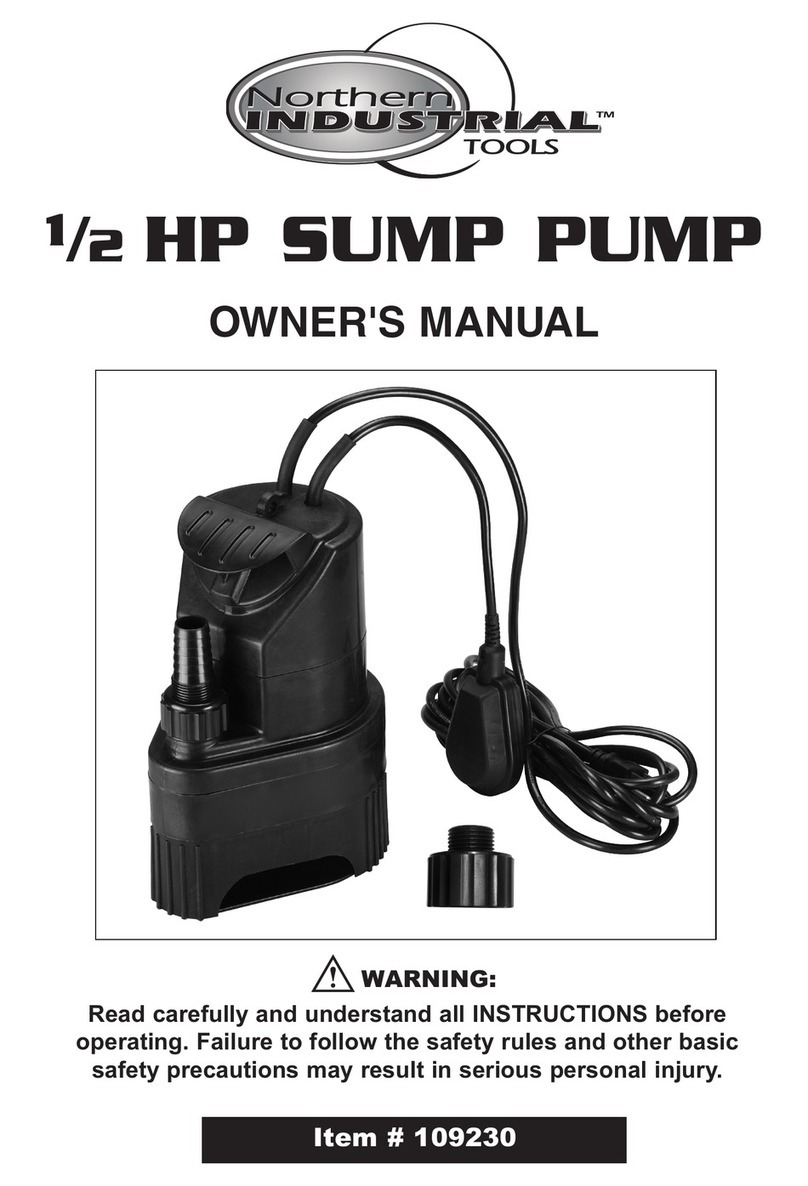
Page 3 of 10
SAVE THESE INSTRUCTIONS
WORK AREA
zKeep work area clean, free of clutter and well lit. Cluttered and dark work areas can cause
accidents.
zDo not use your tool where there is a risk of causing a fire or an explosion; e.g. in the
presence of flammable liquids, gasses, or dust. Power tools create sparks, which may ignite the
dust or fumes.
zKeep children and bystanders away while operating a power tool. Distractions can cause you
to lose control, so visitors should remain at a safe distance from the work area.
zBe aware of all power lines, electrical circuits, water pipes and other mechanical hazards in
your work area, particularly those hazards below the work surface hidden from the operator’s
view that may be unintentionally contacted and may cause personal harm or property damage.
zBe alert of your surroundings. Using power tools in confined work areas may put you
dangerously close to cutting tools and rotating parts.
PERSONAL SAFETY
zStay alert, watch what you are doing and use common sense when operating a power tool. Do
not use a power tool while you are tired or under the influence of drugs, alcohol or medication.
A moment of inattention while operating power tools may result in serious personal injury.
zDress properly. Do not wear loose clothing, dangling objects, or jewelry. Keep your hair,
clothing and gloves away from moving parts. Loose clothes, jewelry or long hair can be caught
in moving parts. Air vents often cover moving parts and should be avoided.
zUse safety apparel and equipment. Use safety goggles or safety glasses with side shields
which comply with current national standards, or when needed, a face shield. Use as dust
mask in dusty work conditions. This applies to all persons in the work area. Also use non-skid
safety shoes, hardhat, gloves, dust collection systems, and hearing protection when
appropriate.
zAvoid accidental starting. Ensure the switch is in the off position before plugging tool into
power outlet. In the event of a power failure, while a tool is being used, turn the switch off to
prevent surprise starting when power is restored.
zDo not overreach. Keep proper footing and balance at all times.
zRemove adjusting keys or wrenches before connecting to the power supply or turning on the
tool. A wrench or key that is left attached to a rotating part of the tool may result in personal
injury.
PNEUMATIC TOOL USE AND CARE
zNever use a tool with a malfunctioning switch. Any power tool that cannot be controlled with
the switch is dangerous and must be repaired by an authorized service representative before
using.
zCheck for misalignment or binding of moving parts, breakage of parts, damaged air hose (not
included) and any other condition that may affect the tool’s operation. If damaged, have the tool
serviced before using. Many accidents are caused by poorly maintained tools.
zCompressed air only. Only use clean, dry and regulated compressed air at no more than
80–95 PSI to power this tool. Never use oxygen, carbon dioxide or any other bottled gas as a




























